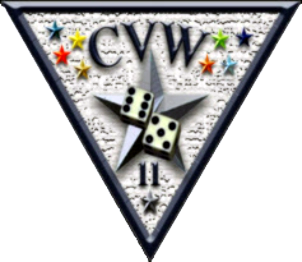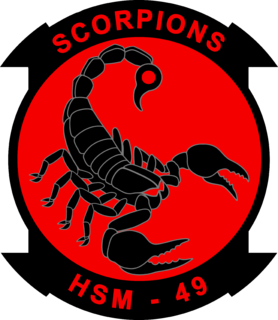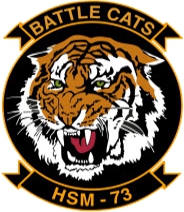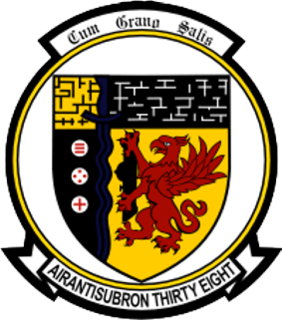
The Lockheed S-3 Viking is a 4-crew, twin-engine turbofan-powered jet aircraft that was used by the U.S. Navy (USN) primarily for anti-submarine warfare. In the late 1990s, the S-3B's mission focus shifted to surface warfare and aerial refueling. The Viking also provided electronic warfare and surface surveillance capabilities to a carrier battle group. A carrier-based, subsonic, all-weather, long-range, multi-mission aircraft, it carried automated weapon systems and was capable of extended missions with in-flight refueling. Because of its characteristic sound, it was nicknamed the "War Hoover" after the vacuum cleaner brand.

The Fairey Swordfish is a biplane torpedo bomber, designed by the Fairey Aviation Company. Originating in the early 1930s, the Swordfish, nicknamed "Stringbag", was principally operated by the Fleet Air Arm of the Royal Navy. It was also used by the Royal Air Force (RAF), as well as several overseas operators, including the Royal Canadian Air Force (RCAF) and the Royal Netherlands Navy. It was initially operated primarily as a fleet attack aircraft. During its later years, the Swordfish was increasingly used as an anti-submarine and training platform. The type was in frontline service throughout the Second World War.

Sea Control Squadron 21 (VS-21) was an aviation unit of the United States Navy. It served from 1945 to 2005 and was mainly tasked with anti-submarine warfare while operating from aircraft carriers.

The Grumman TBF Avenger is an American World War II-era torpedo bomber developed initially for the United States Navy and Marine Corps, and eventually used by several air and naval aviation services around the world.

VS-32, Sea Control Squadron 32, of the United States Navy, known as the Maulers was established as Composite Squadron 32 (VC-32) on 31 May 1949. It was redesignated Air Anti-Submarine Squadron 32 (VS-32) on 20 April 1950. The squadron initially flew the Grumman TBM-3E/-3W Avenger and was based at Naval Air Station Norfolk, Virginia. In 1951 the squadron moved to Naval Air Station Quonset Point, Rhode Island. VS-32 transitioned to the Grumman S2F-1 Tracker in 1954. The VS community moved in October 1973 to the homeport located at Naval Air Station Cecil Field, Florida. The squadron participated in Operation Desert Storm in 1991. Since the closing of NAS Cecil Field, the East coast VS Squadrons have moved to Naval Air Station Jacksonville in 1999. VS-32 was deactivated effective 30 September 2008 in a deactivation ceremony on 25 September.

HMS Avenger was a Royal Navy escort aircraft carrier during the Second World War. In 1939 she was laid down as the merchant ship Rio-Hudson at the Sun Shipbuilding & Drydock Company yard in Chester, Pennsylvania. Launched on 27 November 1940, she was converted to an escort carrier and transferred under the lend lease agreement to the Royal Navy. She was commissioned on 2 March 1942.

A carrier air wing is an operational naval aviation organization composed of several aircraft squadrons and detachments of various types of fixed-wing and rotary-wing aircraft. Organized, equipped and trained to conduct modern US Navy carrier air operations while embarked aboard aircraft carriers, the various squadrons in an air wing have different but complementary missions, and provide most of the striking power and electronic warfare capabilities of a carrier battle group (CVBG). While the CVBG term is still used by other nations, the CVBG in US parlance is now known as a carrier strike group (CSG).

Strike Fighter Squadron 195 (VFA-195), also known as the "Dambusters", is a United States Navy F/A-18E Super Hornet fighter squadron stationed at Marine Corps Air Station Iwakuni, Japan. They are a part of Carrier Air Wing Five (CVW-5) and their tail code is NF. Their radio callsign is "Chippy".

Carrier Air Wing Eleven (CVW-11) is a United States Navy aircraft carrier air wing based at Naval Air Station Lemoore, California. The air wing is attached to the aircraft carrier USS Theodore Roosevelt.

Sea Control Squadron 22 (VS-22) Checkmates was a carrier-based United States Navy squadron based out of Naval Air Station Jacksonville in Florida. The squadron flew the Lockheed S-3B Viking and their mission was mining, undersea and surface warfare, electronic reconnaissance and analysis, over the horizon targeting, and aerial refueling. The squadron was last attached to Carrier Air Wing Seventeen (CVW-17) and was the last squadron flying the Viking. VS-22 was disestablished in a ceremony at NAS Jacksonville on January 29, 2009, and officially on March 31, 2009.

Helicopter Sea Combat Squadron 14 (HSC-14) "Chargers" is an aviation unit of the United States Navy based at Naval Air Station North Island, California (USA). HSC-14 was established as Helicopter Anti-Submarine Squadron 14 (HS-14) in 1984 and was redesignated HSC-14 in 2013. The squadron is equipped with the Sikorsky MH-60S Seahawk.
851 Naval Air Squadron was a Fleet Air Arm squadron of the Royal Navy, first formed in October 1943 at Squantum Naval Air Station in Massachusetts, United States as a MAC-ship escort squadron. It was later disbanded around December 1945.

826 Naval Air Squadron was a Fleet Air Arm aircraft squadron formed during World War II which has been reformed several times since then until last disbanded in 1993.

Helicopter Maritime Strike Squadron 49 (HSM-49) is a United States Navy Maritime Strike helicopter squadron based Naval Air Station North Island, California.

VS-25 was an Anti-Submarine Squadron of the U.S. Navy. Originally established as Composite Squadron 25 on 1 April 1949, it was redesignated Anti-Submarine Squadron (VS-25) on 20 April 1950 and disestablished on 27 September 1968.

Helicopter Maritime Strike Squadron 73 (HSM-73) is a United States Navy Maritime Strike helicopter squadron based on Naval Air Station North Island, California.

Air Anti-Submarine Squadron 35 known as the Boomerangs was reestablished in 1986 as the Anti-Submarine Warfare squadron of CVW-10 which was also created that same year. During its short active service, it flew the Lockheed S-3A Viking before CVW-10 along with it were disestablished in 1988.

Sea Control Squadron 37 or VS-37 also known as the "Sawbucks" was an Anti Submarine Warfare squadron that was decommissioned in 1995 along with CVW-15. During its active history, it flew during the Korean and Vietnam Wars as well as operating the last S-2 Trackers inservice with the US Navy in 1975.

Sea Control Squadron 38 or VS-38, nicknamed the "Red Griffins" was a former United States Navy Anti-Submarine Warfare and later Sea-Control squadron between 1950 and 2004. During its service life, they took part in the Korean War, Vietnam War and the 1991 Gulf War and the 2003 Invasion of Iraq.





















